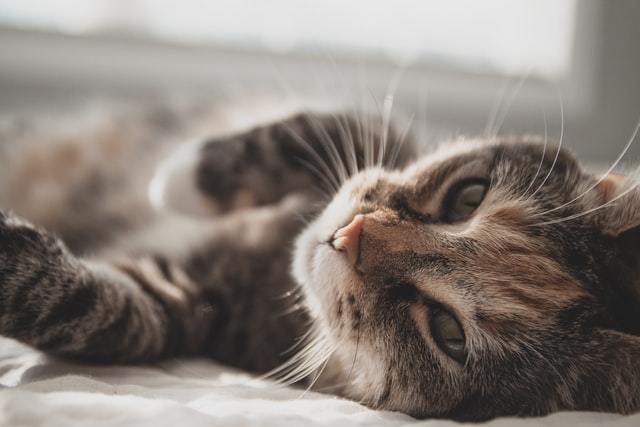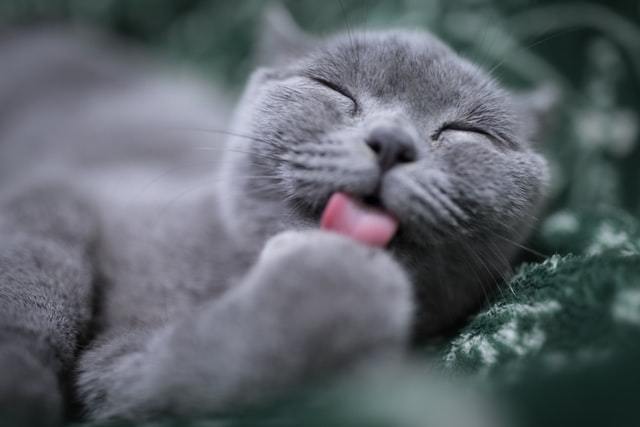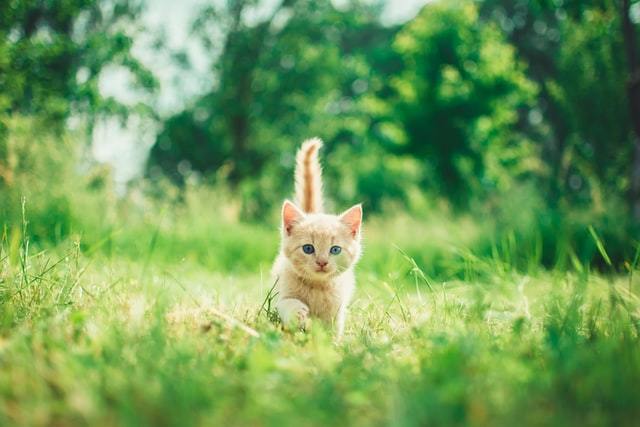In part One of this article, we looked at how frequent joint pain is, why it’s difficult to diagnose and treat and some of the tell-tale signs your cat may be dealing with joint pain.
In this article, we’ll delve a little more into what you can do about it! The good news is, there’s actually quite a lot you can do to keep your cat happy and fulfilled. It just takes a bit of experimentation and a willingness to work with their natural instincts.

MAKE THE NECESSITIES AS ACCESSIBLE AS POSSIBLE
Cats are practical creatures! Much of their happiness is bound up in knowing which side their bread is buttered on.
Access to clean water, a pleasing place to grab a snack and a few choice locations to have an afternoon nap will go a long way to keeping your typical feline feeling very content with their role in life, thank you very much.
When joint pain sets in, a vitally important priority is to get their food and litter box locations as accessible as possible. They need to be on the floor and easily accessible.
You may also need to set up multiple food and bathroom locations, just to be sure they can get where they need to be on a particularly painful day.
You might also want to pay close attention to the kind of litter boxes to use. They need to be low and easy to step into.
The last thing you want is to have your cat associate going to the bathroom with pain. When that happens all kinds of bad habits can set in.
And of course, focus on the luxuries too. Make sure your little hedonist buddy has plenty of easily accessible places to grab a sleep. Ramps and easily navigated cat towers will work wonders for this.

SHIFT TO A JOINT-FRIENDLY DIET
As we humans get older, we start to pay more attention to diet. Where you might have been able to eat a whole packet of chips and a packet of chocolate biscuits consequence free in your twenties, in your forties you may well be dealing with a very different reality!
Cats are exactly the same.
As joint issues become an issue, it’s important to make sure your cat sheds any excess weight. All those extra pounds add significant stress to the joints.
You may also want to double down on the healthy fish oils. Studies suggest that cats fed a diet high in Omega 3 are both more mobile and free of arthritic pain.
Trust me, most cats don’t mind a bit of extra fish in their diet!
Another good option to talk over with your vet is supplements. Glucosamine and chondroitin are a great dietary addition for keeping cartilage and joint as limber as possible.

DON’T BE STINGY WITH A BIT OF TENDER LOVING CARE!
This last one will probably just be a matter of instinct for most cat owners. When you know your pet is hurting, it can never hurt to ladle on a serious dollop of tender loving care.
It’s not unusual for an arthritic cat to need a little help with grooming those tough to reach places. A gentle brush with a little warm water will help keep their coat soft and glossy.
You may even want to try gentle massage, either through gentle stroking or with a brush. Just be careful to pay attention to how your cat responds. If an area hurts, best avoid it!
Finally, as a cat becomes less mobile, their claws can get overgrown. It’s a really good idea to keep an eye on this and give them a careful trim when required.
And remember, you are the expert in how your cat feels. If you have a feeling or intuition your cat is in pain, there’s a good chance you’re right.
If you feel your cat has joint pain, the best thing you can do is talk to your vet and find some practical methods to make their life a little easier. After all, we all need a bit of extra care at some point in our lives!



